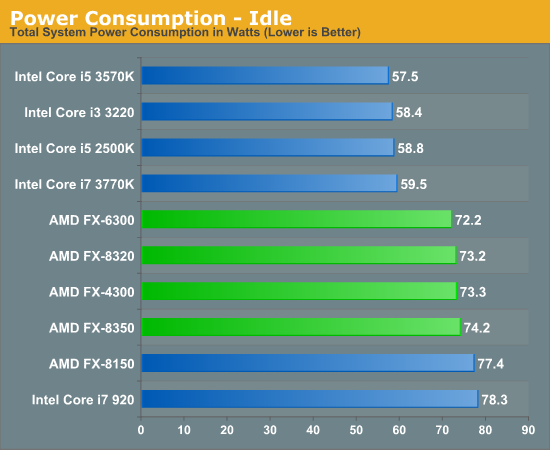12-13w more..?.
And looking at the CPU at the bottom it make me thinks that no one seemed to pay attention to all this not so long ago, there must be something that escaped me...
http://www.bit-tech.net/hardware/cpus/2010/12/07/amd-phenom-ii-x6-1100t-review/7
No, just that times change, and so do our PC parts. Nehalem's efficiency was lost with the bigger and faster chips, even with an efficient mobo, while the Phenoms had the reverse issue, in that while power hungry in general, the X6 weren't much more power hungry than the X4, and the X4 barely used more power than X2 or X3. With a good mobo, the Phenom IIs could idle lower than the high-end Intel CPUs (which can be seen in many reviews, but don't expect the average $70 mobo to do pull that off).
In ST workloads, and MT where parallelism was high, Intel's were better, but where IO was the issue, or MT with lots of shared data, that era of AMDs were pretty strong, and usually better for the money if that fit your needs (Phenom IIs where noticeably smoother in multitasking than Nehalems, with or without HT, as well, under Windows Vista and 7--hard, if not impossible, to pick out from benchmarks, but pretty much a universally accepted observation from experience). Intel's IGP also still sucked donkey balls, to the point regular non-techies noticed the difference, IME, and would be more pleased with a lower-performing AMD CPU than a higher-performing Intel, given IGP (on top of better compatibility with productivity apps), which was also good for overall non-gaming PC value.
Much has changed since 2010

. The Phenom II X4 and X6, so long as you didn't get one of the bastard children w/ no L3, were excellent buys, several years ago, and helped keep Intel's prices in check, outside of the fastest i7 CPUs. With the OP's use case, a Phenom II would have been an excellent value in 2009-11. But, that was 3 CPU generations ago.







